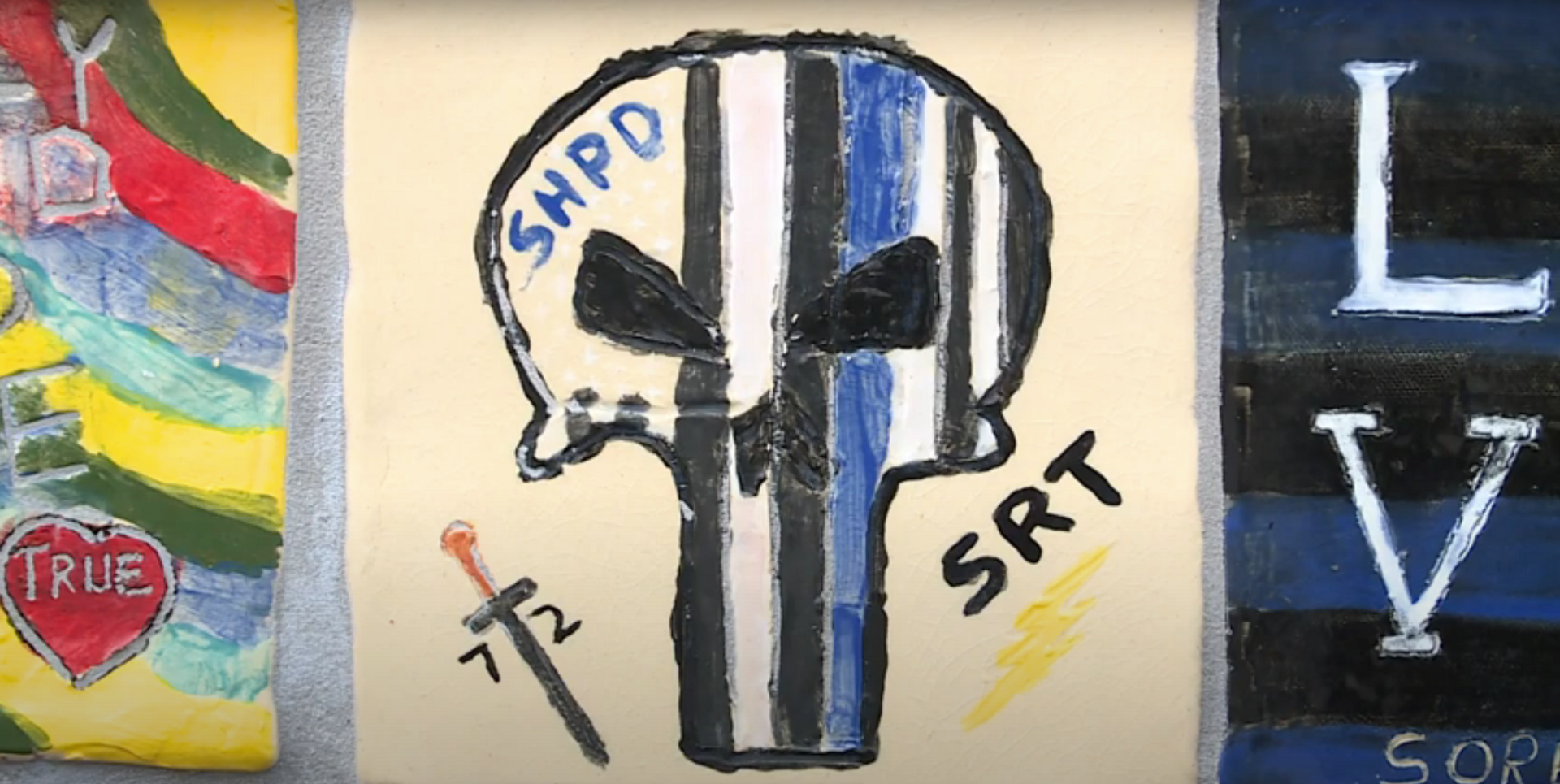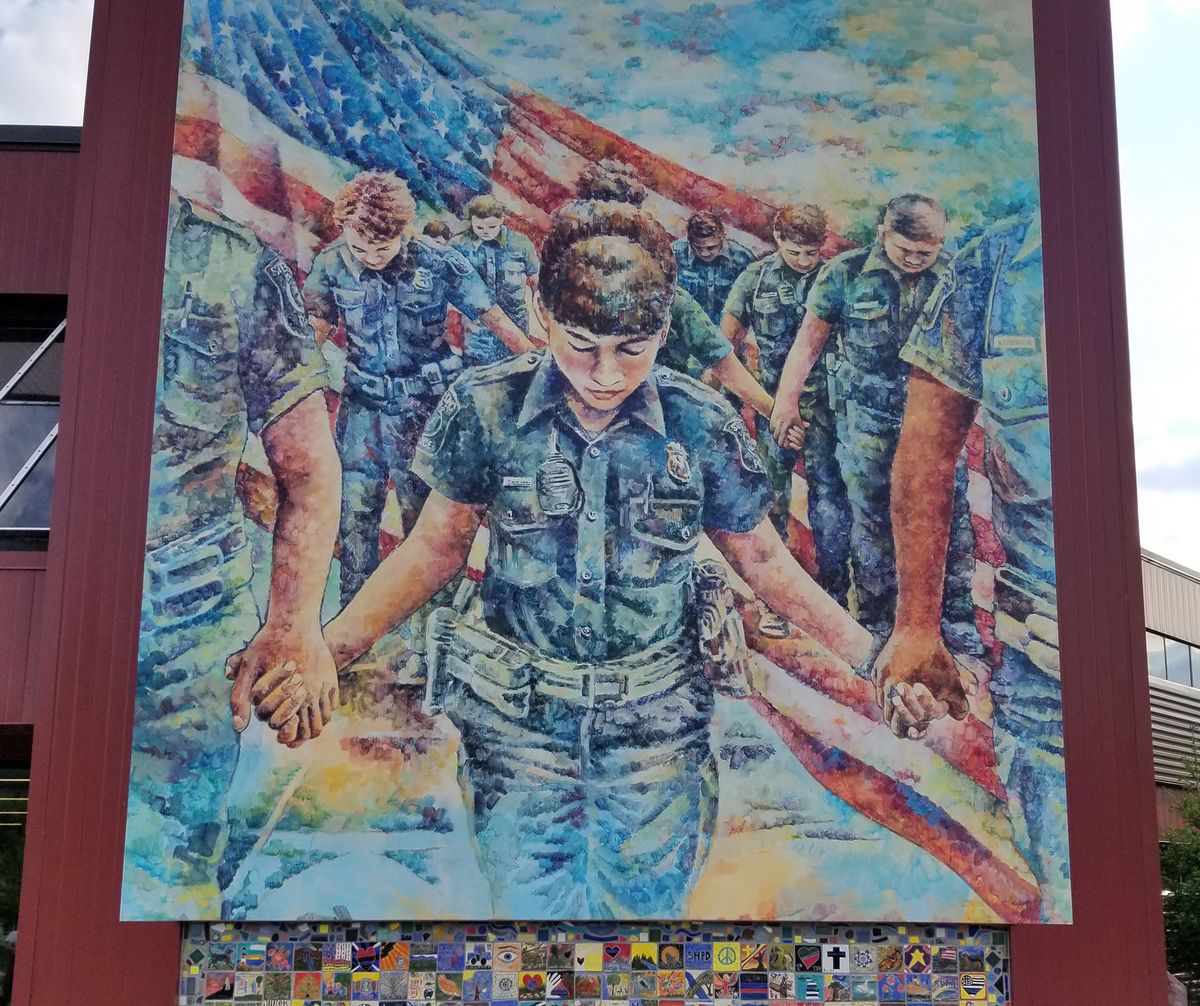Officials in the Detroit suburb of Sterling Heights, Michigan have removed a controversial tile with a skull image from a ceramic montage below an outdoor mural sponsored by the Detroit Institute of Art (DIA) at a local police station, saying it would “distract” from the mural’s purpose of saluting law enforcement.
The tile depicted a skull logo linked to a Marvel Comics vigilante character, the Punisher, as well as a fragment of a “Thin Blue Line” flag, which originated as a show of support for the police but has since also come to symbolise white supremacy and opposition to racial justice protests.
The removal of the tile was reported earlier by The Detroit Metro Times.

The offending tile can be seen in a screengrab from a YouTube video released by the City of Sterling Heights about the mural's unveiling
“We don’t want that one piece to distract from the purpose of the mural, which is to honour police service in the community,” The New York Times later quoted the mayor of Sterling Heights, Michael Taylor, as saying. The city said the tile would be replaced but that the mural would remain.
Since the mural was unveiled on 1 June, the DIA has drawn fierce social media criticism from artists, a group of current and former employees, and others who say that it celebrates law enforcement at a time when the museum should be focusing on racial justice and police violence against people of colour. The Detroit artist who designed the mural, Nicole Macdonald, has since renounced the work of art, saying that she feels “completely sick” about it and feels that she was used.
The tile is one of many in rows mounted below the mural that were created by police officers and their families in workshops at the Detroit museum.
In a letter to employees this week, the DIA’s director, Salvador Salort-Pons, apologised for “failures and mistakes” made by the institution in the art commissioning process.
“Included among the tiles was an image that was particularly offensive to many in our community,” he wrote. “Had we been aware of its symbolism, recently appropriated by white supremacist groups, we would have absolutely disallowed it. We unequivocally oppose the inclusion of this symbol.”
The DIA has pointed out that under contracts governing the financial support it receives from area counties, the art projects it sponsors must be “driven by the community” rather than by the institute. However, it says that future projects that it underwrites under its Partners in Public Art (PiPA) programme will undergo a “robust review process” before they are approved by local communities.
The museum has been under scrutiny recently for its treatment of employees of colour and women, and some have questioned its commitment to serving all residents of Detroit, a majority Black city. An outside inquiry commissioned by the museum found that Salort-Pons had been faulted by employees for missteps on race and gender and for an intolerance for dissent.


